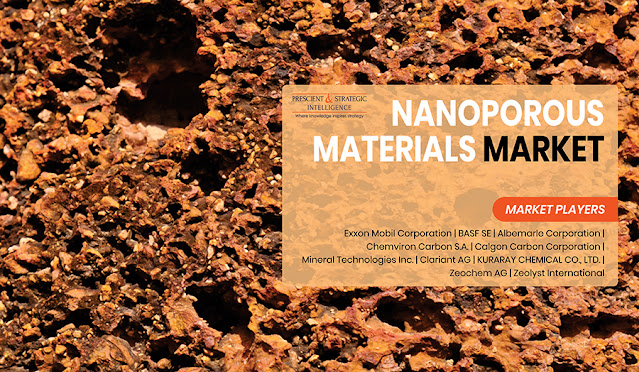
Why are Worldwide Sales of Nanoporous Materials Booming?
Nanoporous materials are basically materials that comprise a regular organic or inorganic framework which reinforced a regular porous structure. These pores generally have a size of around 100 nanometers or sometimes even smaller. Most of these materials are classified as membranes or bulk materials. As nanoporous materials have large surfaces, they exhibit excellent catalytic and absorbent properties, which make them highly suitable for use as absorbents and catalysts. Moreover, some organic nanoporous materials can be made artificially.
According to the International Union of Pure and Applied Chemistry (IUPAC), nanoporous materials are segregated into three segments namely microporous materials with a pore size in the 0.2–2nm range, mesoporous materials with pore size in the 2–50nm range, and microporous materials with pore size more than 50nm. Nanoporous materials are also used in ion-exchange applications. Moreover, they are needed in nano reactors, guest-host interaction, and low dielectric constant mediation. In addition, they are extensively used in biomedical applications for preventing bacteria and decontamination, slowing down drug release, and filtration in hemodialysis.
Because of the large-scale use of nanoporous materials in the above-mentioned applications, the global nanoporous materials market is predicted to exhibit huge expansion in the coming years. The market generated a revenue of $6,411.7 million in 2015 and it will progress at a CAGR of 8.3% from 2016 to 2022, as per the estimates of P&S Intelligence, a market research company based in India. Petroleum refining, water treatment, pet litter, chemical processing, food and beverages, and detergents are the major end-users of these materials.
Hence, it can be said without hesitation that the sales of nanoporous materials will soar all over the world in the coming years, mainly because of their mushrooming usage in various end-use industries, such as chemicals, petroleum, and food and beverages.
Comments